By Carol Woodbridge Mulder © 1990
** Originally published in the September October 1990 issue of The Crabbet Influence magazine. Also published in The Crabbet Influence's 1993 Collector's Volume II.
The 1930 foal crop of the W.K. Kellogg Arabian Horse Ranch at Pomona, California, consisted of 21 youngsters - the largest crop yet for the then five year old stud which had already gained wide recognition and fame. There were eleven fillies and ten colts which arrived from January through November with the six births during April making it the busiest month.
The roster of the 1930 Kellogg foals follows:
Lady Anne 757 (Antez 448 x *Rifda 605) chestnut mare bred by Kellogg, sold May 1930
Ferdal 754 (*Nasik 604 x *Ferda 596) chestnut stallion bred by Kellogg, sold October 1932
Kadah 752 (*Nasik 6040x *Rifla 601) bay mare bred by Kellogg, sold about 1931
Roaba 749 (Kaaba 546 x *Rossana 598) bay mare bred by Kellogg, sold about 1932
Ralet 759 (*Raseyn 597 x Sherlet 339) bay stallion bred by Kellogg, sold 194?
Amar 767 (*Nasik 604 x *Rasima 606) bay stallion bred by Kellogg, leased out
Sanad 761 (Hanad 489 x Saba 437) chestnut stallion bred by Jewett, sold about 1931
Anzah 762 (Antez 448 x Hasiker 268) chestnut stallion bred by Kellogg, sold about May 1933
Kabar 748 (Kaaba 546 x *Raida 600) grey stallion bred by Kellogg, sold about 1933
Salan 763 (Antez 448 x Fasal 330) bay stallion bred by Kellogg, sold about 1933
Antafa 755 (Antez 448 x *Rasafa 602) chestnut mare bred by Kellogg, sold about 1931
Antilla 766 (Antez 448 x Schilla 419) chestnut mare bred by Kellogg, died about 1933
Anlah 750 (Antez 448 x Killah 103) bay mare bred by Kellogg, sold about 19313
Jadur 756 (Jadaan 196 x Sedjur 193) grey mare bred by Kellogg, sold 1936
Bintez 751 (Antez 448 x *Bint 608) chestnut stallion bred by Kellogg, sold about 1935
Badia 760 (Jadaan 196 x Babe Azab 567) grey mare bred by Kellogg, sold about 1935
Farik 753 (*Nasik 604 x *Farasin 615) bay stallion bred by Kellogg, died 12-23-1930
Sarab 764 (*Ferdin 613 x Sankirah 149) chestnut stallion bred by Kellogg, sold about 1935
Hadisa 758 (Hanad 489 x *Ferdisia 595) bay mare bred by Kellogg, sold about 1933
Estrellita 765 (Jadaan 196 x Amham 410) grey mare bred by Kellogg, sold about 1937
Rasrah 865 (*Raseyn 597 x Kirah 551) grey mare bred by Kellogg, sold 10-12-1937
Lady Anne was the first foal of the year. She arrived on January 3. She was marked with a star, race, and left hind pastern. An appealing photograph of lady Anne as a newborn, held by Louise "Mitties" Rathbun, daughter of the ranch's publicity man and then a child, was widely used as a promotional picture for the Kellogg Ranch. At the age of five months Lady Anne was sold to William Randolph Hearst for his Arabian stud at San Simeon, California. Between 1935 and 1947 she produced six fillies and three colts for Mr. Hearst. These animals were sired by Kasar 707, Rehal 504, Ansarlah 1281, and Ghazi 560. Lady Anne was 17 at the birth of her last foal.
Ferdal was foaled on January 9. He was marked with a strip and some white on his left hind leg. An attractive, strong horse, he was too plain headed for an Arabian stallion. He was sold at age 2 to A.B. Nesbit, Belleville, Illinois. He was never used for breeding pure Arabs.
Kadah was the third foal of the year; she arrived on January 19. Her markings were a strip which ran diagonally into her left nostril and socks on both hind legs. She was a full sister to the beautiful, much more flamboyantly marked, 1928 chestnut filly Shemseh 656. Kadah was also of high quality; she was a dry and refined mare. She was probably a yearling when she was sold to James N. Clapp, Pomona, California; Mr. Clapp and Kadah seem to have later moved to Medina, Washington. Mr. Clapp bred six foals from Kadah - four fillies and two colts. Five of them were sired by Sanad 761 and one by his son Sahiby 1549. Kadah produced these foals between the years 1937 and 1943. Probably the most familiar name among them was that of her 1940 chestnut daughter Khuzna 1848 (by Sanad). Kadah was only 13 when she produced her last foal.
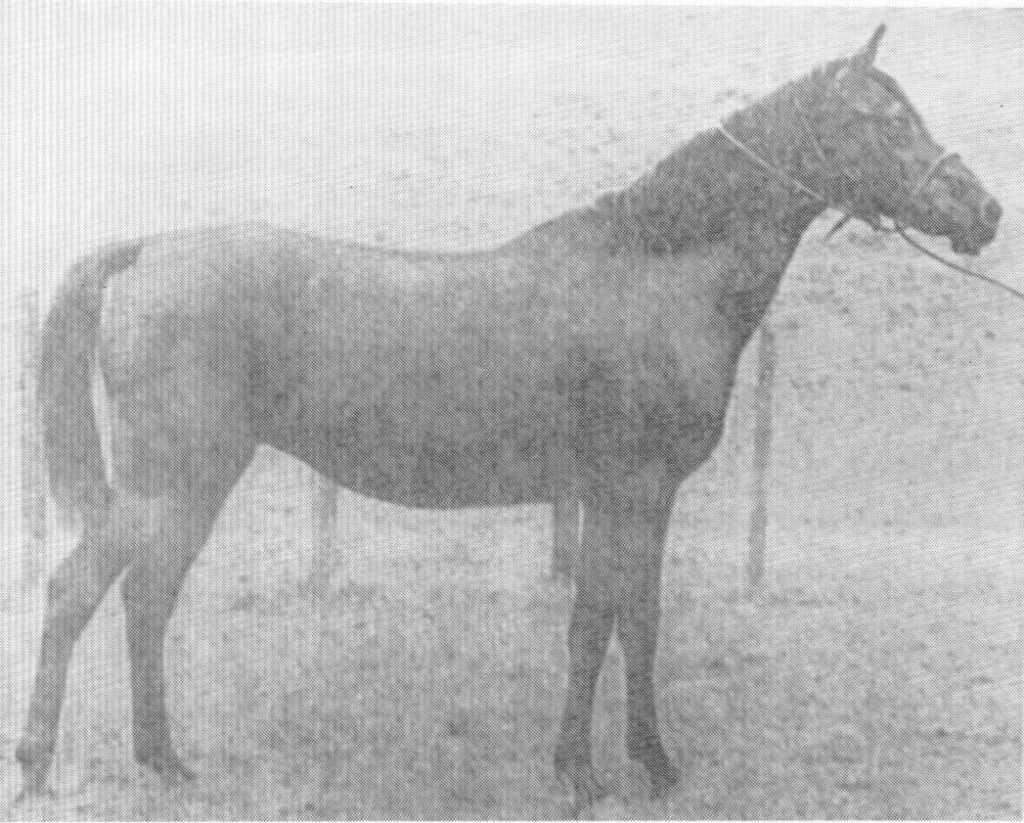
Roaba, the fourth foal of the year, arrived on February 24. Her only marking was a star. Mr. Reese, the Kellogg Ranch manager, had bred two Kellogg mares to Kaaba, one of the stallions of Albert W. Harris who was, during his era, one of the most important of the American Arabian horse breeders. Mr. Harris had two ranches where he kept Arabian horses; most were at his Kemah Farm at Lake Geneva, Wisconsin, but he sometimes kept a few at his Chino, California, property which was not far from the Kellogg Ranch. Kaaba was by Mr. Harris's chief sire, *Nuri Pasha 517 (*Nureddin II 974 x Ruth Kesia) and out of Ophir 285 (Segario 249 x Onrust 14). *Nureddin II was a full brother to *Nasik. Ruth Kesia was a granddaughter of the brilliant moving Azrek. Ophir was a double great granddaughter of the great racer *Kismet 253 and also a great granddaughter of the beautiful Ali Pasha Sherif stallion *Shahwan 241. Kaaba, a horse of good merit, had running speed. The nick of Kaaba with *Rossana proved a good one for Roaba was a beautiful, dry, feminine mare of considerable quality and excellent Arabian type. She was about 2 years old when W. R. Hearst bought her from the Kellogg Ranch. At San Simeon she proved a valuable broodmare. Between 1933 and 1952 she produced a total of 13 foals; there were five fillies and eight colts. The sires used were Joon 439, Rahas 65, Ghazi, Ansarlah, *Snounou 4205, *Mounwer 4210, and Mahabba 1296. Roaba's 1933 gray daughter Roaberta 1001 (by Joon) was at first retained as a broodmare by Hearst, but later she produced for The Van Vleet Arabian Stud in Colorado. Roaba's 1937 bay son Roabrah 1405 (by Rahas) was retained at San Simeon and became an important sire for the Hearst program. Her 1939 chestnut son Ghazibroa 1742 (by Ghazi) became a sire of importance in the California program of T.J. and M.H. Lanigan; his blood has bred on well. Roaba was 22 when her last foal was born.
Ralet, foaled on February 25, was one of the best and most important of this foal crop. A rich shade of bay with dapples, his only marking was a very small star. He stood 14.3 hands. He was a horse of classic Arabian type and of exceptional beauty. His head was lovely. He was retained by the Kellogg Ranch as both a sire and exhibition horse. Very athletic, he was trained as a liberty jumper. Ralet had an unusually kind, sensitive, and amiable temperament, but he was not adverse to a bit of fun now and then. In his book, The Kellogg Arabians, Their Background and Influence, H.H. Reese wrote of Ralet:
"In the minimum of time he was trained for 'liberty' jumping as he seemed to have a natural liking for this work. In his exhibition stunt he cleared the barriers effortlessly and with every indication he was enjoying himself. Four poles set about four feet high were placed at near equal distance from each other, and extending from the show arena fence inward, making good jumps, but without 'wings' to keep a horse from running out. To keep Ralet from ducking a jump when so inclined, ring attendants would stand at about where a wing would be placed. One man took care of two jumps, as he would run straight across the ring while Ralet was taking the curved turn at the end of the arena. Occasionally the attendant would be a little slow in making this trans-ring jaunt and Ralet could see that the man was not quite close enough to head him off, giving him a first-class excuse to run out, rather than make the jump. When Ralet would pull one of these 'quickies' on the mobile (but slow) human 'wing' he would buck and go through various antics showing he was pleased with himself on having put one over on mere man, but he would get back in stride and make the remaining jumps in good form. Ralet's airy jumping was always greeted by a good round of applause, but when he pulled one of his fast ones it really brought down the house."
The famous Arabian horse artist, Gladys Brown Edwards, created a beautiful bronze sculpture of Ralet jumping. These exquisite pieces are today collectibles and are very rare. (Crabbet.com Note: We feel that this last sentence deserves an exclamation point as these pieces would be the center piece of the best Arabian horse art collection, and the envy of all who had the chance to see them.)
Ralet was well trained to ride as a ranch pleasure horse. He had a correct, average, and free trot, but he was also a natural-born pacer as was his sire, *Raseyn. Ralet would either pace or trot as his rider preferred. Ralet's very desirable pacing gait was very easy to ride, was easy on the horse, and was a relatively effortless way to cover ground. Ralet was also fearless to ride, never displaying alarm at the unexpected; he was totally trustworthy. Of all the horses he ever rode in his life, my father, Dudley B. Woodbridge, now 96 years of age, says that he considers Ralet to have been his favorite and the best.
At the Kellogg Ranch, Ralet competed with his great sire for stud duties and so he got only 12 foals during his life - five colts and seven fillies. Nine of them were bred by Kellogg and three by other people. The two best known Ralet get were his 1939 gray daughter Babeyn 1755 (out of Badia 760) and Narlet, his 1942 bay daughter (out of Narasa 920). Both Babeyn and Narlet left significant stock.
In the 1940's, after the Kellogg Ranch came under the jurisdiction of the United States Army Remount Service, Ralet was issued out to Paul Dupertuis, Lingle, Wyoming, and soon after they were able to buy him at 17 years of age. His loss was felt keenly at the Kellogg Ranch by those who loved him and felt he ought never have been sent away. (Ralet 759 is pictured at the top of this page, shown jumping at liberty in the show ring at the Kellogg Ranch.)
Amar was the sixth Kellogg foal of 1930. Foaled March 4, he was beautifully marked with a strip and four three-quarter stockings. He was leased to a Captain Joyce and apparently never returned to the ranch. I do not know his fate, but he never sired a registered foal.
Sanad was the seventh foal foaled at the Kellogg Ranch in 1930, but he was an in-utero purchase and information about him can be found in part 10 of this series. Sanad was foaled March 29. He was a stylish horse of quality and had a good head.
Anzah was foaled April 16. He was marked with a strip. As a 3 year old, he was sold to Generalissimo Rafael Leonidas Trujillo of Santa Domingo, Dominican Republic. As Rafael Leonidas Trujillo Molina, the Generalissimo was President of the Dominican Republic from 1930 to 1938 and again from 1942 to 1952. Anzah was shipped in June of 1933. He left no stock in North America.
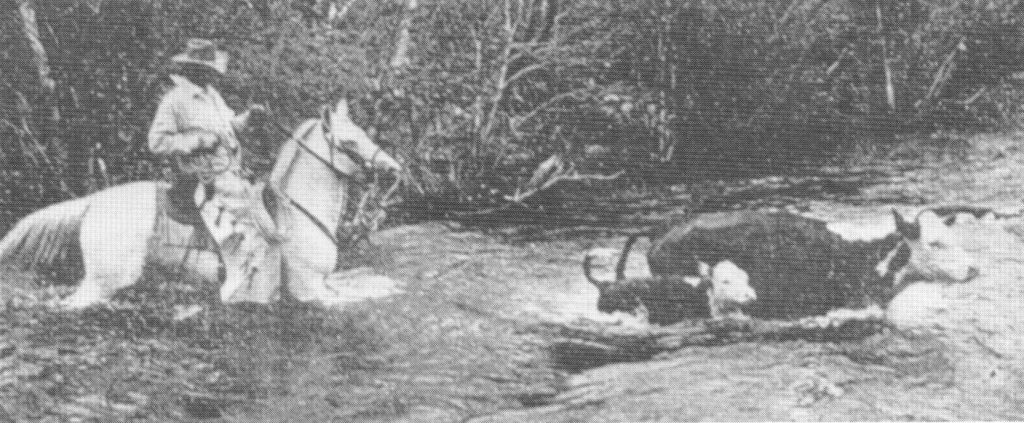
Kabar was foaled April 19. He was marked with a strip, white on lower lip, left three-quarter stocking, and both hind fetlocks. A good horse with excellent legs, he was sold when about 3 years old to Julian M. Jacobson, Kingsburg, California. However, it was under the ownership of The Van Vleet Stud at Nederland, Colorado, that he found his place in life. At the picturesque Van Vleet ranch, located less than 30 miles south of the Rocky Mountain National Park, Kabar worked cattle, often at altitudes exceeding 10,000 feet, in the spectacular terrain of the Continental Divide. His entire stud creer was under Van Vleet ownership. He was 7 years old when he got his first foals which arrived in 1938. A total of 27 were born over the next ten years with the last arriving in 1948. There were fourteen colts and thirteen fillies and among them were some high quality animals.
Salan, the tenth 1930 Kellogg foal, arrived on April 20. He was marked with a star. He was about3 years old when he was sold to J. Ben Wiley, Santa Maria, California. He was 18 years old before he sired any purebred foals; his first arrived in 1949. He got a total of eight registered purebreds in only three crops, the last born in 1951. All were bred in California by James and Virginia Wrench, H.D. Beauchamp, M.D., and John J. Sullivan, M.D.. Dr. Sullivan may have owned Salan as he bred the largest number (six) foals from him. Salan was 20 when he sired his last foal crop.
Antafa was foaled April 22. She was marked with an incomplete strip and a small snip. She was probably about a yearling when she was purchased by W. R. Hearst. Later she was owned by John and Mason Flowers, Puente, California, and then by E.J. Boyer, also of Puente. Typy and pretty in her young days, Antafa lost some of her looks in her old age, mostly because her back went down. She was however, a great broodmare. She has ability to produce stock of outstanding quality by various different stallions and several of her daughters have bred on exceptionally well. She produced a total of 13 foals, eleven of which were fillies and only two were colts. Some of her noteworthy daughters were: 1937 gray Joonanta 1412, 1938 chestnut Joontafa 1585 (both by Joon), 1939 chestnut Rifanta 1684 (by Rifnas 924), 1941 chestnut Nawari 2112, 1942 chestnut Alla-An 2231, 1943 chestnut Allafa 2690 (all three by Alla Amarward 1140), and 1952 chestnut Antama 7942 (by Tamarlane 3274). Antafa was 22 at the birth of her last foal.
Antilla arrived on April 23. She had a blaze and her left hind pastern was white. She died of a broken neck at about 3 years of age. Her death was a true tragedy for the breed as she was a full sister to the glorious 1929 filly Schillan 706. Antilla died too young to have reproduced.
Anlah was foaled April 24. Her only marking was the left front coronet. She was probably a yearling when she was sold to W.R. Hearst who kept her during her entire broodmare career. Between 1935 and 1950 she produced eight foals, there were three fillies and five colts. The sires used were Kasar, Ghazi, Roabrah, Rahas, and *Snounou. Her most successful was her first - her 1935 chestnut son Ansarlah 1281 (by Kasar). Ansarlah was a popular sire in his day. Anlah was 20 when she produced her last foal.
Jadur was the fourteenth Kellogg foal of 1930. She arrived on May 4. Her markings were a blaze, right front pastern, and left hind fetlock. She was at first retained as a broodmare by the Kellogg Ranch for which she produced her first foal, the 1934 bay mare Rahala 1121 (by *Rahal 950). Jadur was sold at the age of 6 years to Mrs. J.N. Clapp, Medina, Washington, but was immediately resold to Frances Newhall Woods of Redwood City, California, for whom she produced three foals. Jadur's total production was four - three fillies and one colt. Her 1941 gray daughter Sahabet 2110 (by Tanatra 444) became a familiar matron. Jadur was only 11 years old when she had her last foal.
Bintez, the fifteenth 1930 Kellogg foal, arrived on May 12. He had the same striking shade of chestnut coloration, with a flaxen mane and tail, as his famous sire. Bintez was marked with a strip and right hind sock. He was a showy and attractive horse with splendid shoulders. Bintez was the original leader of the once famous Kellogg liberty drill. When he was about 5 years old he was sold and exported to San Salvador, Central America. He left no stock which was probably unfortunate for the breed.
Badia proved one of the best and most successful animals of this foal crop. She was foaled May 15 and was marked with a strip and a snip, left front sock, right front coronet, and left hind sock. She was about 5 years old when sold, apparently to P.F. Gray, Bakersfield, California. Between 1936 and 1954 Badia produced 12 foals - five colts and seven fillies - by the stallions Farana 708, Ralet, Ferseyn 1381, Kasar, and Kubriya 3733. Mr. Gray bred all but one of these; Badia's last foal, which arrived when she was 24 years old, was bred by James and Virginia Wrench, Jamestown, California. Badia had ability to produce outstanding stock which, when given the opportunity, had unusual ability to breed on well. Her two gray sons 1936 Barad 1220 and Bairam 1349 (both by Farana) were particularly beautiful and good horses, but, unfortunately, Barad never got a chance at stud. Badia's 1938 gray daughter Ferdia 1588 (also by Farana) was a truly great broodmare and an individual of considerable quality and beauty. Badia's 1939 gray daughter, Babeyn 1755 (by Ralet) was another success. Her next six foals (all by Ferseyn) were beauties; most famous of them was the 1946 gray mare Ferba 3790 who was an outstanding winning stock horse.
Farik, the seventeenth 1930 Kellogg foal, arrived on July 12. He was marked with a star and had some white on both hind legs. He was a full brother to the great Farana 708, foaled the year before. Unfortunately, Farik choked to death in a feed box at only five months of age.
Sarab was foaled July 24. He was marked with a star and snip and had three-quarter stockings on his right front and both hind legs. He was the first foal of the young Crabbet in-utero import, *Ferdin. Sarab was sold at about 5 years of age to S.S. Land, Ft. Worth, Texas. He left no stock.
Hadisia was foaled September 13. Her markings were a star, race, and snip. She seems to have been sold to Jasmine L. Eddy, Seattle, Washington, when she was about 3 years of age. However, all of her six foals - one filly and five colts - were bred by Marie C. Scott, Dubois, Wyoming. The sires used were Hamaan 914, Bazal 3388, and Cyrus 8115. These youngsters were foaled between 1946 and 1956 when Hadisia was 16 to 26 years of age.
Estrellita was foaled October 16. She had a small star and white pasterns on her left front and right hind legs. Estrellita was retained by the Kellogg Ranch long enough for the ranch to breed her first foal from her. She was sold when about 7 years of age to Miriam Le Vin, Allentown, Pennsylvania, but I suspect that Estrellita never left California. I believe she was probably resold to H.I. Tupman, Bakersfield, California, who bred her second foal from her. Later she passed to Paul Paul, Fresno, California, who bred her third foal. Her final owner, who bred her remaining five foals, was Dan Thomas, Scappoose, Oregon. Estrellita's total production was eight foals produced between 1936 and 1951. There were three colts and five fillies. The sires used were *Raseyn, Hasab 835, and San Felipe 2199. Estrellita was 21 at the birth of her last baby.
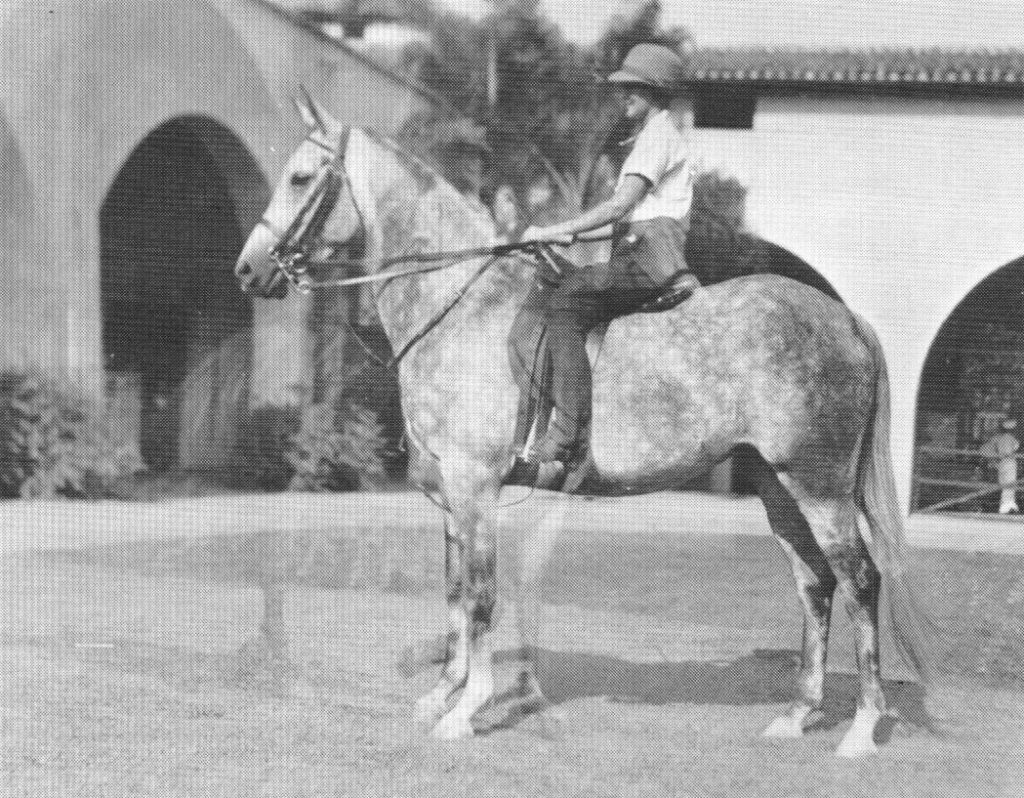
Rasrah, foaled November 9, was the twenty-first and last 1930 Kellogg foal. Although the 1937 stud book lists no markings for her, she clearly had at least the left front fetlock and left hind pastern white. Rasrah became one of the best known members of this foal crop. She had a handsome appearance, although she was not of the quality of several of the other 1930 Kellogg foals. She remained at the Kellogg Ranch - perhaps in her case she did not at first sell - and was trained to ride. She proved to be attractive under saddle and carried herself well. My sister, L. Marian Woodbridge (now Mrs. J. E. Robbins), rode Rasrah under English tack in the Kellogg Sunday afternoon exhibitions during the year 1935. My sister was then 11 years old and Rasrah was 5 and pregnant with her first foal. While Marian and *Rasafa 602, the mare my sister had previously ridden in the Kellogg exhibitions, had been well suited because of *Rasafa's fine temperament, Marian and Rasrah did not get along as well and my sister did not care for her as a saddle mare. Apparently Rasrah adjusted herself better to others, however, ash she was sometimes used for riding by Kellogg guests and movie actress Olivia De Havilland, who indicated she did not consider herself a good horsewoman, was photographed riding her. Rasrah was sold from the Kellogg Ranch when she was 6 years old (a month short of her 7th birthday, actually). Her buyer was Fred E. Vanderhoof, Woodlake, California; she was pregnant at the time with her third Kellogg-bred foal and Mr. Vanderhoof bred five foals from her. Later she was owned by J.L. O'Donell, Long Beach, California, who bred one foal from Rasrah. Her last owner was Alice Payne, Whittier, California, for whom she produced four foals. Rasrah produced a total of 13 foals - seven colts and six fillies. They were sired by Rossdin 985, Sikin 964, Jadaan, El Kumait 1124, Schantez 832, Rudan 1808, Shereyn 926, Rasraff 2365, and *Raffles 952. Several of her produce attained varying degrees of recognition during their lifetimes. These included her 1937 gray daughter Dirahna 1351 (by Rossdin), her 1938 gray son Rahsik 1477 (by Sikin), her 1940 bay son El Arabrah 1922 (by El Kumait), her 1941 chestnut son Rantez 2064 (by Schantez), and her 1942 gray daughter Kafi 2453 (also by Schantez). Her most renowned produce was the very good broodmare Masrufa 4819 (by Rasraff), a bay foaled in 1948. Despite her own flaws of somewhat off-type ears, rather droopy croup, and less than ideal hind leg alignment, Rasrah has bred on very well in a strongly positive manner. She was 18 when her last foal was born.
By the end of 1930 there were less than 800 purebred Arabians in the United States. While I cannot reconstruct the December 31, 1930, Kellogg stock inventory with total accuracy, I believe the Kellogg stud numbered approximately 67 Arabians at that time. This was more than 8% of the total United States Arabian population. By the end of 1930 the W.K. Kellogg Arabian Horse Ranch was one of the largest and most important Arabian studs in North America.
**All of the articles included in the re-launched Crabbet.com site from the original website, Georgia Cheer, Silver Monarch Publishing and The Crabbet Influence magazine are shared here with permission of Georgia Cheer given May 16, 2012.**

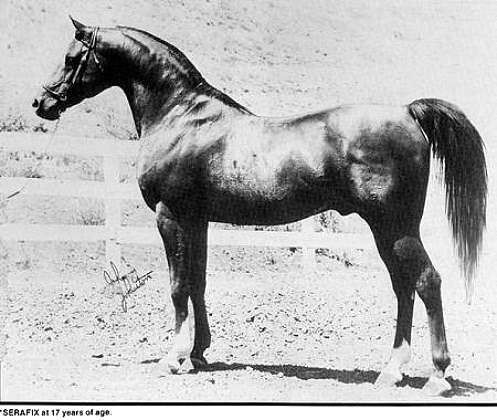
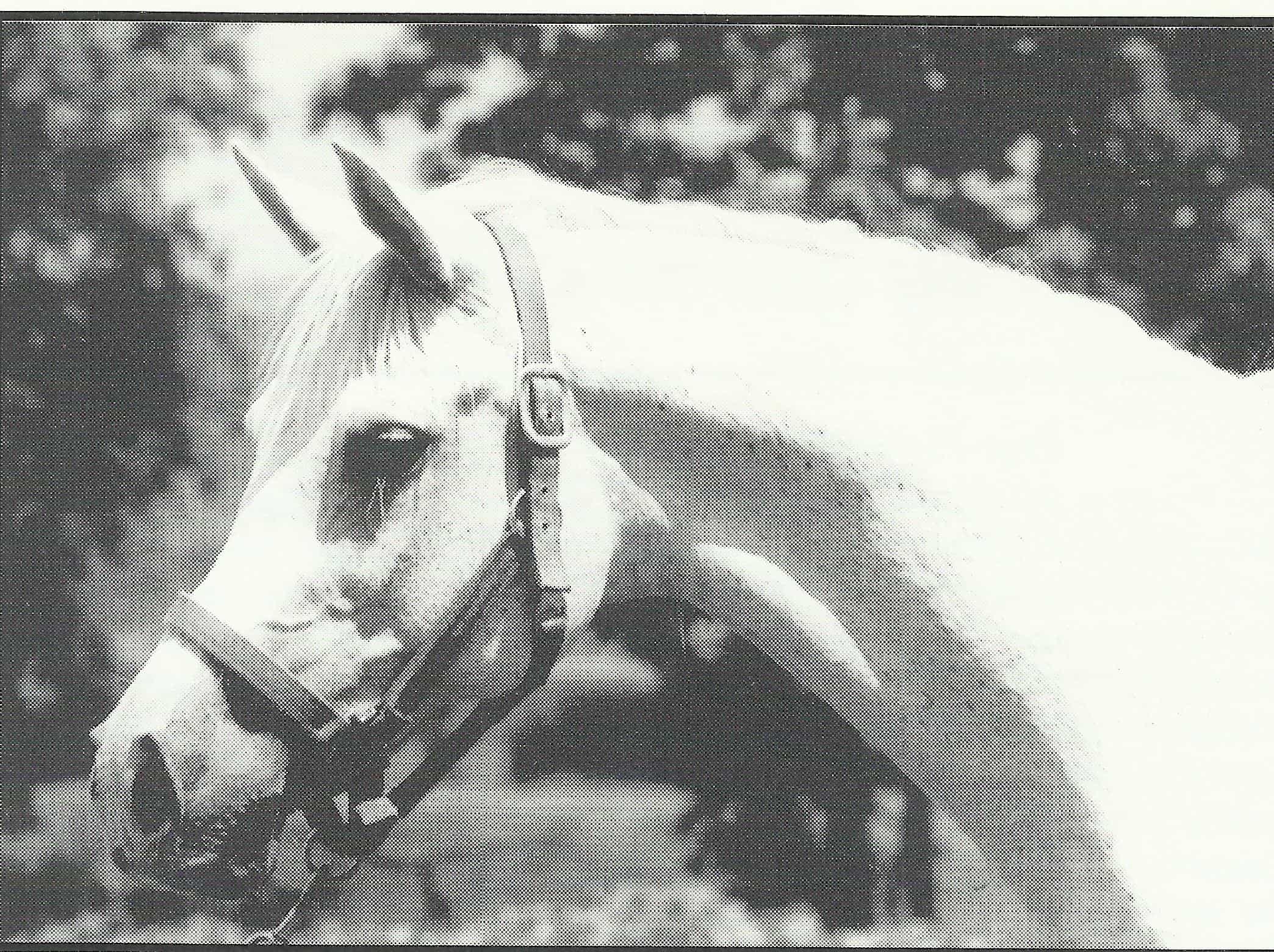

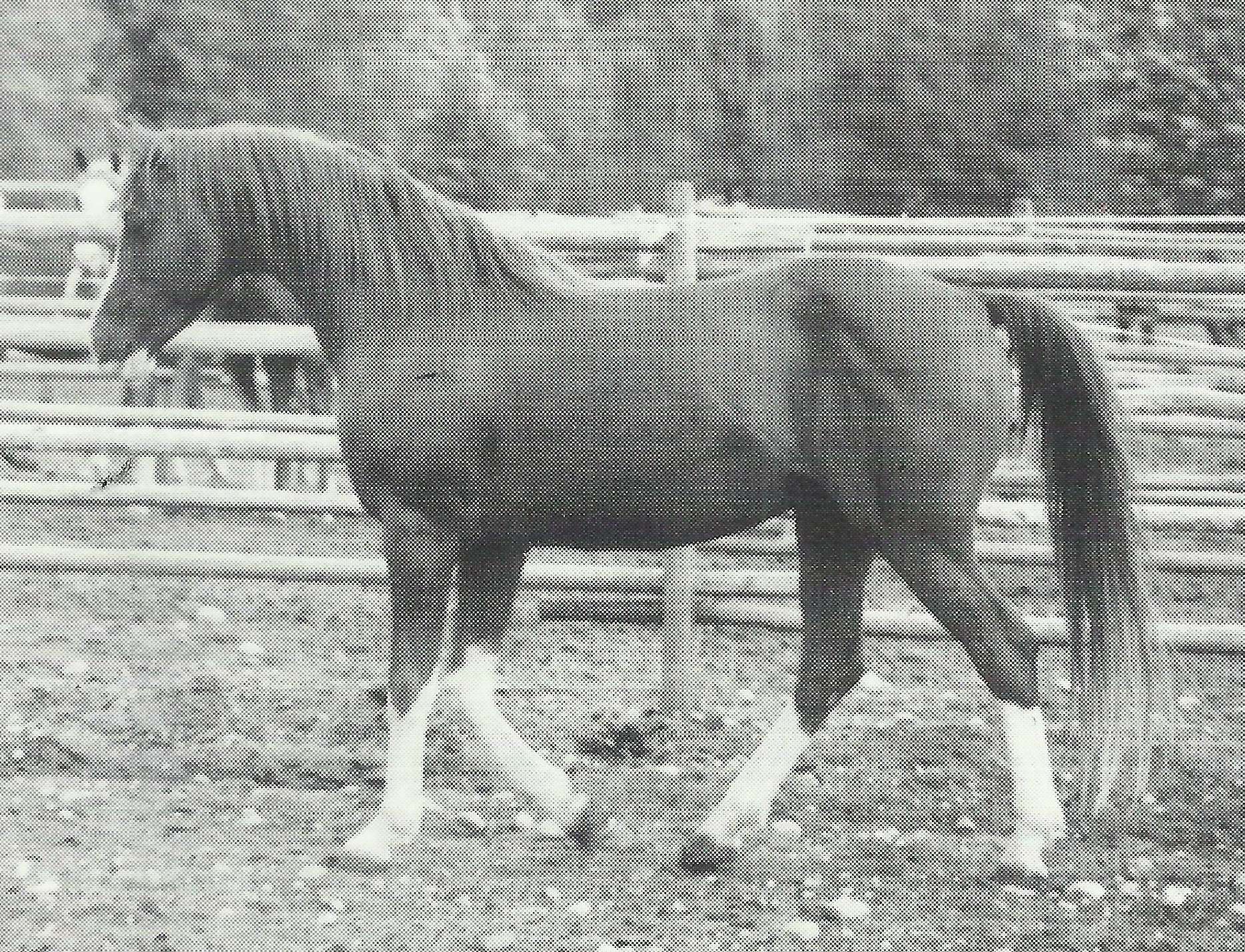
Comments
No Comments